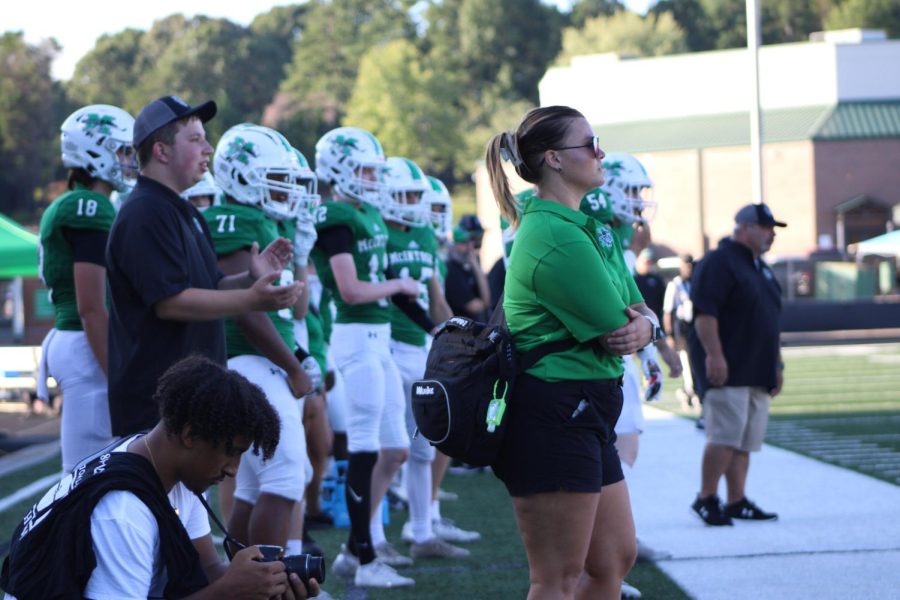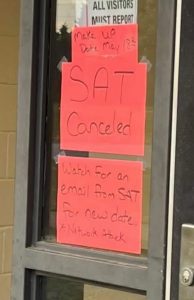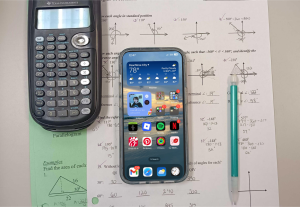“Getcha head in the game” – safely
McIntosh’s new Athletic Trainer Joslyn Harbin wants the best for the Chiefs’ sports teams
Oct 4, 2022
Running down the field. Sprinting towards the end zone. The quarterback is going for a touchdown until a player from the opposite team dives to grab his leg but ends up slamming his helmet into the quarterback’s knee. The referee blew the whistle and all that could be heard was the shocked reactions of the crowd and shouts from the coaches. Multiple people run onto the field to check if the quarterback is okay, but only one has the answers and the means to help him: the athletic trainer Joslyn Harbin, MS, ATC, LAT.
Athletic trainers are highly qualified and authorized healthcare professionals that give care and treatment for athletes, with the help of a medic or physician. People often don’t realize how important athletic trainers are to the health and structure of an entire team. Having an athletic trainer, not only, allows for athletes to have all-around access to a person that understands the seriousness of their injury and also knows them personally. There are also certain labels that come with being an athletic trainer such as ATC, MS, and LAT. An ATC or LAT in a title is for a certified athletic trainer who has gotten their bachelor’s or master’s degree from a certified athletic training program and has taken an extreme certification exam. Lastly, when someone has MS in their title, it means they have a master’s degree in science and is now a master of physical therapy.
The McIntosh Chiefs happen to have their athletic trainer: Joslyn Harbin, MS, ATC, LAT. Joslyn Harbin is the new head athletic trainer at McIntosh High School and is known for her role in the complexity of their sports teams.
Harbin has a plethora of ways of testing injured athletes to make sure they are fully recovered and ready to return to the field.
“They have to go through functional testing and sports-specific functional testing. For football, they’d do their normal position and if they can perform their functional training well and 100%, then they’re allowed to go back,” Harbin said.
Functional sports testing is the examination of an athlete’s limitations in their sport and can determine how an athlete’s performance affects their team.
Harbin is not only present at the sports games but she also attends practices.
“I have to be here on campus for all practices, but football is our high-contact sport during the fall, so I have to be there at their practices the whole time. [On other days], I’ll go to whatever sport has a home game, and in the spring, [the main sports] would be lacrosse and probably soccer,” Harbin said.
A high-contact sport is considered to be a sport in which participants constantly come into bodily contact with one another, like football, where tackling and hitting the ground can cause serious trauma to someone.
For people who want to go into the physical therapy career or go down that route, Harbin explained all of the educational degrees they’d need to get.
“In their undergrad, they need to major in kinesiology, or any degree that has the prereqs athletic training is now a master’s degree. So whatever program has all the requirements to get into a master’s program. Most of the time, it’s a kinesiology undergrad, and then you go off and get your master’s in athletic training,” Harbin said.
Kinesiology is the study of mechanics of body movements and it’s so important for physical educators, coaches, and fitness professionals to teach effective performance in specialized health and body skills.
Athletic trainers are a very important aspect of any sport when it comes to the athlete’s physical health. Harbin understands and wants to make it clear that the last thing she wants to do is pull athletes from their sport. It’s more about making sure that they can play without hurting themselves and making sure they don’t get injured again.
“It’s giving them corrective taping and exercises so that they can still play their sport and not injure themselves more or again. So it’s not always pulling kids because you pull kids, that’s more paperwork you have to do,” Harbin said.











